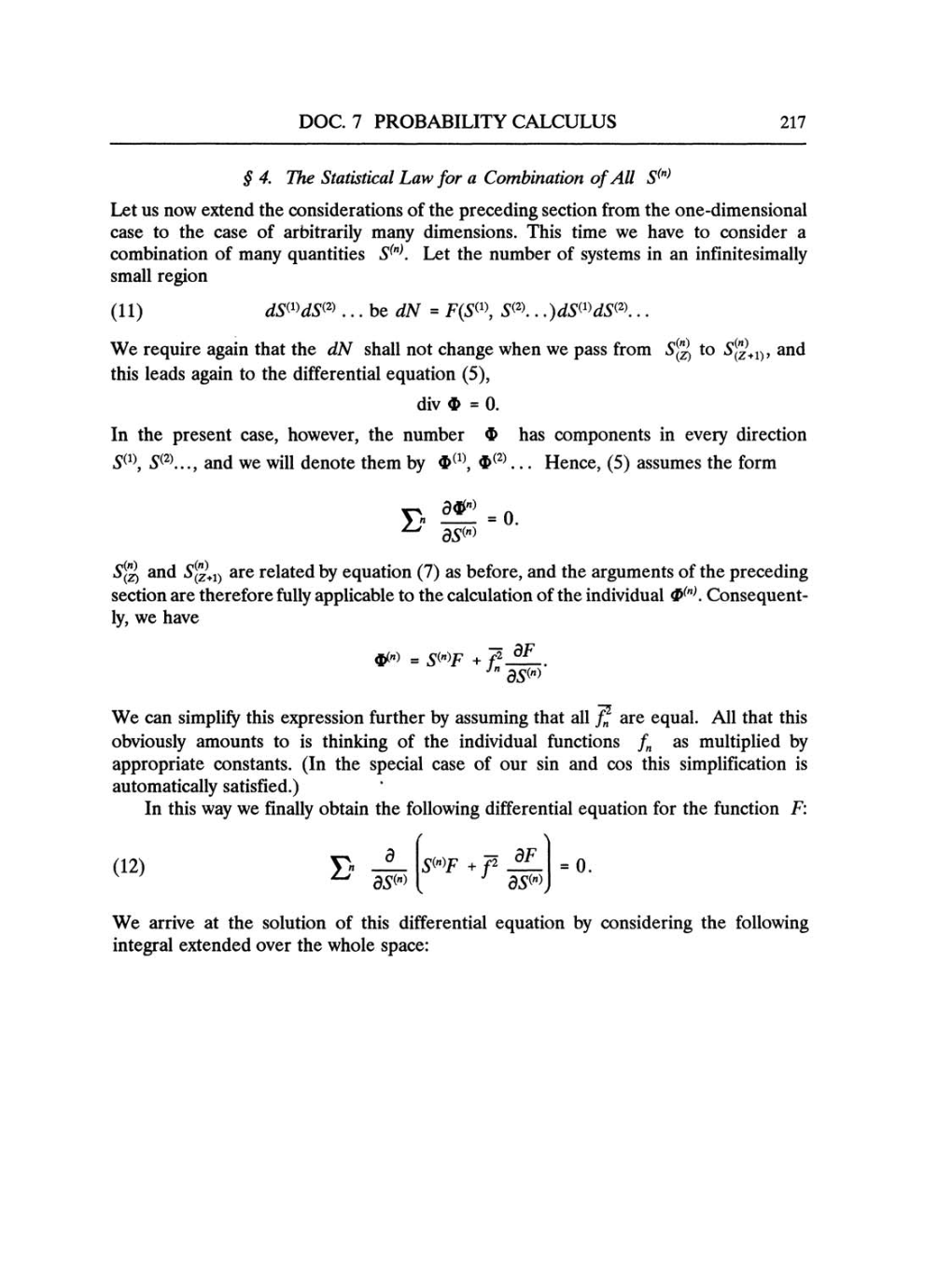DOC.
7
PROBABILITY CALCULUS
217
§
4.
The Statistical Law
for
a
Combination of
All
S(n)
Let
us now
extend the considerations of
the
preceding
section from
the one-dimensional
case
to
the
case
of
arbitrarily
many
dimensions. This time
we
have to
consider
a
combination of
many
quantities S(n).
Let the number of
systems
in
an infinitesimally
small
region
(11) dS(1)dS(2)
...be dN
=
F(S(1),
S(2)
...)dS(1)ds(2)...
We
require
again
that the dN
shall not
change
when
we pass
from
S(n)(z)
to
S(n)(z+1),
and
this leads
again
to
the differential
equation
(5),
div
$
=
0.
In the
present
case, however,
the number $
has
components
in
every
direction
S(1),
S(2)...,
and
we
will
denote them
by $(1),
$(2)...
Hence,
(5) assumes
the
form
E
-
-
o.
^
dS("
S(n)(z)
and
s(n)(z+1)
are
related
by
equation
(7)
as
before,
and the
arguments
of
the
preceding
section
are
therefore
fully
applicable
to
the
calculation
of
the individual
P(n).
Consequent-
ly,
we
have
®(» =
S(nF
+
f'n
5
dF
dS"
We
can simplify
this
expression
further
by assuming
that
all
f2
are equal.
All
that
this
obviously
amounts to
is thinking
of the
individual functions
fn
as
multiplied
by
appropriate
constants.
(In
the
special
case
of
our
sin
and
cos
this
simplification
is
automatically satisfied.)
In
this
way we finally
obtain the
following
differential
equation
for the function
F:
(12)
J
3
dS^
S(n)F
+
f2
dF
ds^
=
o
We
arrive at
the
solution
of
this differential
equation
by
considering
the
following
integral
extended
over
the
whole
space:
